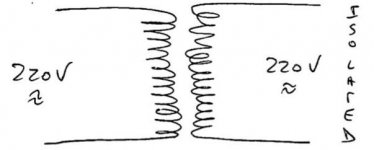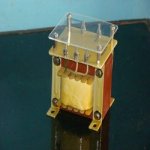I built my first SMPSs with a 10Mips digital scope. And it was enough for stuff under 100kHz. I couldn't see al transients, butif there was ringing the scope showed the high noise. Since it worked from a 9V adapter (Class II, no safety ground connection), I could stick it anywhere. There was only one time i had to change the protecting diodes at the input, and it was from a tube amp, not SMPS.
I only have a x10x probe, and it was cleary enough (with it the maximum voltage input is 1000V). Now i have an EMG 2x60Mhz analoge oscilloscope to. For measureing both sides, determining ringing it's very good.
For beginners: always keep your desk clean! Safety is the most important. I also reccomend every one buy an RCD (Residual Current Device = RCD, Fehlerstromschutzschalter; it measures the current difference between Neutral and Line, and if tis over a treshold it disconnect Mains), it safed me from lots of electrocut.


